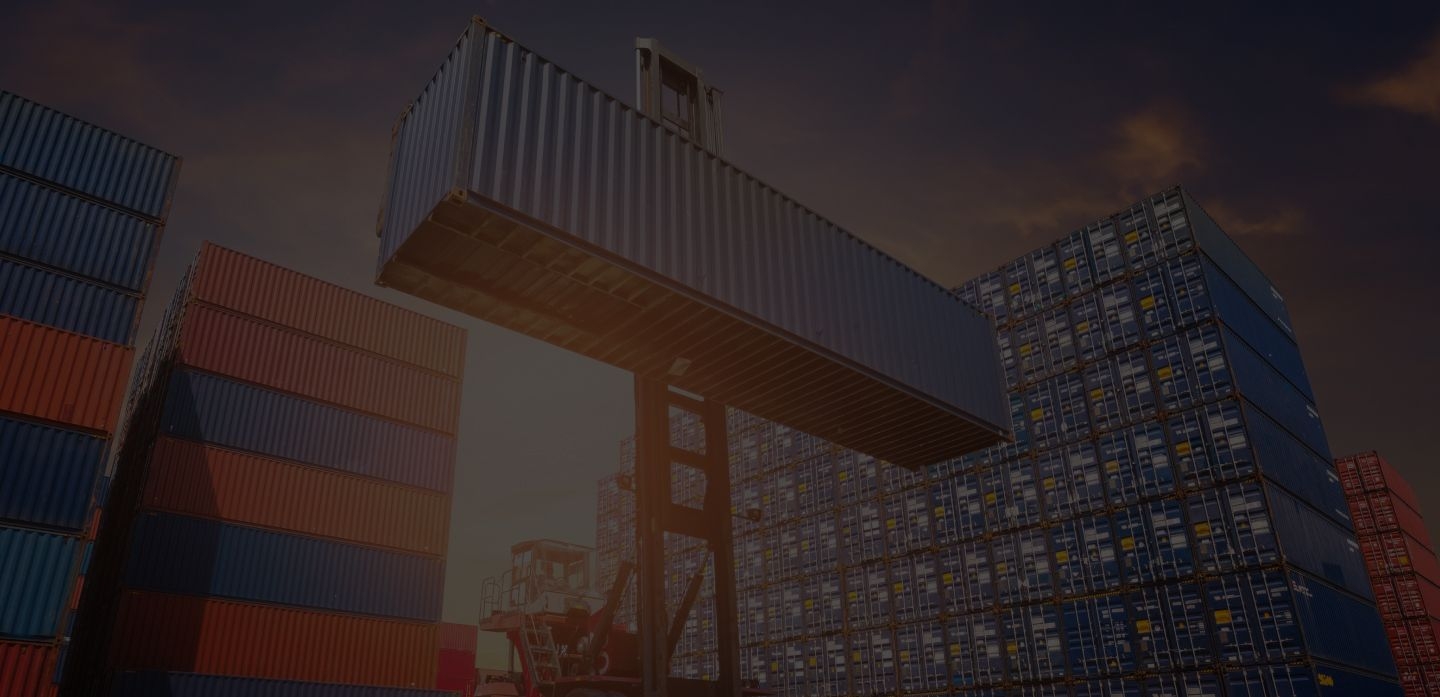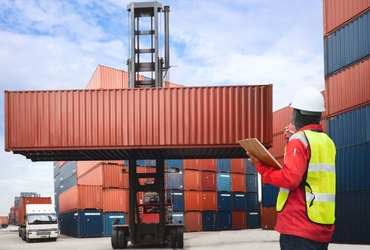
Four experts weigh in on what's in store for the ocean freight industry in 2019



Another year has come and gone. From the fire that broke out on board the Maersk Honam and the peak in the US trucking shortage to the US-China trade war, pin-pointing 2018’s biggest or most impactful event would be a challenging task.
How did 2018 shape up? What can we expect from 2019? How big of a role will automation play this year?
We speak to four of the industry’s leading experts to get their insights.
1. How would you summarize the events of the shipping industry in 2018?
Eric Johnson (Senior Editor, Technology, JOC.com): I think the biggest change was ocean carriers making sincere strides to embrace technology and a broader role as service providers beyond port-to-port vessel operation. The top carriers coalescing into fewer, larger alliances places a premium on them differentiating from one another.
Lars Jensen (CEO, SeaIntelligence Consulting): Overall, 2018 started out relatively well, but demand gradually slowed down over the year in most trades, and from a global perspective we ended up with capacity increasing slightly more than demand. This has the consequence of postponing a global balancing of supply and demand. The Transpacific was the exception - a combination of capacity reductions by the carriers just before the peak season and the looming trade tariffs causing a surge of cargo into the US led to a temporary capacity squeeze. This, in turn, led to the strongest spot rate peak in 10 years.
Klaus Lysdal (Vice President of Operations, iContainers): From a US perspective, the big news was really the trade war. Maybe it wasn’t terribly surprising that Transpacific inbound cargo reached new record levels last year, but that it was certainly not the intention. Hopefully, the majority of the US companies that suffered or struggled with the first round of tariff increases will find a way to recover. Know many that were hurt because they quite simply did not have the time to source their products from vendors outside of China.
Sam Chambers (Editorial Director, Asia Shipping Media): It was a time for liners to bed in all the consolidation of the prior years. It was also a year of trialling new tech.
2. In your opinion, what are the biggest challenges the shipping industry will face in 2019?
EJ: I think the two biggest issues to deal with are whether the US’ stance on trade will impact global volumes significantly, and how shippers respond to carriers assessing fuel surcharges ahead of the IMO low-sulfur fuel mandate.
LJ: The largest challenge facing the carriers is the implementation of new BAF structures in preparation for the 2020 low-sulphur rules. The expected cost of switching to low-sulphur fuel in 2020 is estimated to be in excess of US$10 billion annually, and this is an amount that the carriers cannot absorb. They have to pass it on to the shippers - and hence the need to (re)introduce new BAF formulas. The first true test of this will be the Pacific contract negotiations for contracts running May 2019 to April 2020.
KL: Initially, it will be the continuation of the trade war. So much will depend on what happens there. Brexit is another concern that could pose new challenges.
Otherwise, expect 2019 to be a transition year in a sense as carriers and the shipping world as a whole prepare for IMO 2020 regulations. Usually, we see a number of different approaches from one carrier to another when there are major regulatory changes happening. So far, it looks like the same pattern is unveiling as everyone tries to put their plans into action.
- SC: How to get shippers to adopt new online payment systems. How to keep a lid on new orders given that there is set to be one ultra large container ship delivering every week in 2019. The other biggie is how to fine tune the fuel mix ahead of the January 1, 2020 global sulphur cap.
3. What do you foresee to be the main factors affecting capacity in 2019?
EJ: In light of the two dynamics I mentioned above, the key will be whether any single liner makes a big order for new capacity and whether other carriers follow suit, as has been the case historically. Right now, they are showing more discipline than they have in more than a decade.
LJ: We will continue to see the phase-in of ultra-large vessels, and as a consequence, we will likely also continue to see a reduction on the number of services offered by the main carriers - a trend we can already see on the new networks published by the Ocean Alliance for 2019.
KL: By and large, the development in the trade war will be significant. These are after all the two biggest trade partners in the world. Eventually, a solution will be found and the market as a whole will return to or find a new “normal”.
With the changes in the carrier line up over the past few years and the larger vessels that are entering most of the fleets, it will be exciting to see how the carriers resolve the capacity puzzle. On the US East Coast, ports are working hard to accommodate the larger vessels that are expected to start calling here from Asia in particular.
- SC: Demand. Major global economies suddenly look rather frail.
4. What role do you think automation will play in ocean freight in 2019?
EJ: I think it will still have a limited role in ‘19. Shippers are struggling with the idea of software that automates too much of their freight procurement and execution. But they will tinker on the edges with platforms that automate some of those functions. It’s coming, but ‘19 is probably much too soon.
LJ: We are at a point where a lot of automation and digitalization projects are gaining in size and maturity - whilst others remain on an experimental basis. This trend will continue in 2019, where I expect most traction to be seen by online freight offerings by both carriers, forwarders and third-party portals. Under the surface, we will see a continued drive to coalesce around interconnectivity standards allowing a multitude of digital options to be available whilst at the same time not sacrificing efficiency.
KL: When people outside of or on the fringes of the industry think about automation in shipping, it tends to be the big dream of a completely automated flow with little human intervention. Unfortunately, we are not quite there yet. We will undoubtedly see more automation throughout the industry but by and large, it will be small pieces of the chain here and there. But it’s more a matter of what individual companies can automate in their processes than anything overall that’s going to majorly change the industry.
But there is more automation coming. Whether it’s at the terminals, the carriers, warehouses, truckers or freight forwarders, it is happening. But more on company basis working with what’s currently feasible for the given company.
- SC: I imagine we will see some real landmark developments in the automation of ocean freight this year both at sea and on land.
5. What’s one problem in the ocean freight industry that you would like to see resolved or at least mitigated in 2019?
EJ: It seems to me that carriers need to get a better handle on their available capacity at any given moment. Without them, they are flying blind and making irrational pricing decisions, which trickles down to every player, from forwarders to shippers.
LJ: I would like to see a stronger drive towards enforceable contracts - this is absolutely key for not only generating a level of market stability but also for all the various online freight offerings to gain true scale over time.
KL: It’s hard to point at just one thing. There are certainly a number of things that could use improved solutions. I would love to see some sustainable solutions for intermodal challenges for operations in the US, not only for the driver shortage but also the congestion and equipment issues at several ports. Drivers often spend several hours in line and all too often end up not getting the equipment they were trying to pull. That often translates to poor service and additional charges for the end customer.
SC: Greater cohesion to meet 2050 decarbonisation goals. Far greener ships than currently exist will need to be ordered by as early as 2025 if shipping is to meet its decarbonisation pledges.
- 1. How would you summarize the events of the shipping industry in 2018?
- 2. In your opinion, what are the biggest challenges the shipping industry will face in 2019?
- 3. What do you foresee to be the main factors affecting capacity in 2019?
- 4. What role do you think automation will play in ocean freight in 2019?
- 5. What’s one problem in the ocean freight industry that you would like to see resolved or at least mitigated in 2019?
Related Articles


